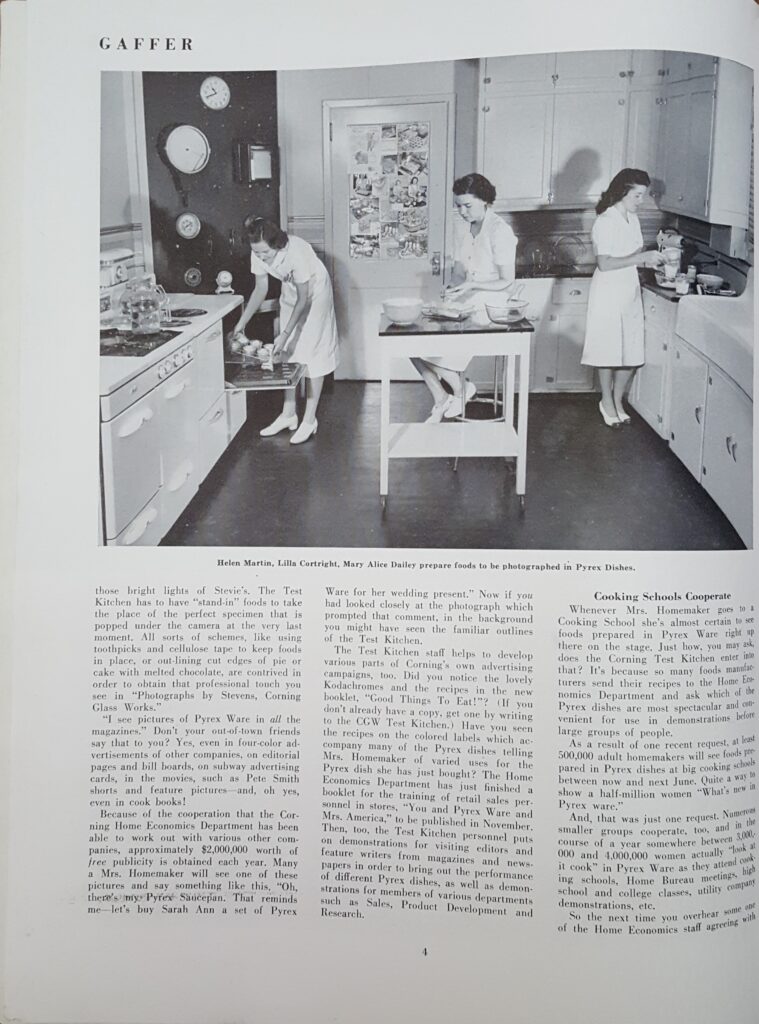In the October 1946 issue of “Gaffer,” we find several employee highlighted in the Consumer Products Division: Director of Home Economics Dr. Lucy M Maltby, Photographer Ayres Stevens, Helen Martin, Mary Alice Dailey, Julian Kilman, Sales Representative Dudley Olcott, Lilla Cortright, Esther Rhodes, Sales Representative Clair Van Etten, Sales Representative Harry Hormell, Sales Representative Harry Cook, Field Representative Lillian Ziegfeld, Field Representative Verna McCallum, Field Representative Jessie Johnston, and Field Representative Josephine Blanch.
Started in 1929, we find out that the test kitchen used to be located on the second floor of the Personnel Building and was only 13ft by 23 ft. I bet everyone on that floor got hungry! So much Pyrex history happened in such a tiny space and dedicated for the sole purpose of selling more Pyrex Ware. Besides cooking, the kitchen assisted with pictures for advertisements, publishing recipes, and designing various dishes. A new and interesting fact to me is “many food manufacturers send their recipes to the Home Economics Department and ask which of the Pyrex dishes are most spectacular and convenient for use in demonstration before large groups of people.”
The article details just how Pyrex was tested against other dishes uses various recipes and a high tech instrument panel. The author also credits to the Home Economics Department for free publicity in their own little game of “I Spy Pyrex.” They also developed training materials such as “You and Pyrex Ware and Mrs. America.” It is also interesting that they highlight the old 221 round cake dish and the new 221 round cake dish “with handles” because the dishes are very, very different. The author addresses the evolution of the kitchen, the fashion of homemaking, and the need for the 221 to adapt or die. (Off topic, “Back in Time for Dinner” was a fascinating realty show that summarizes our modern food system). The article also gives examples of testing products such as mixers and bowls.
According to Corning Archives, “The Personnel Building was part of Main Plant, which was a complex of multiple buildings/factories. The Main Plant complex, with the exception of Little Joe Tower, was imploded in the late 1980’s/early 1990’s. The company’s current headquarters building was built upon the site. “
This article is particularly exciting for me because I now have more Pyrex People to research! Also, the snarky conclusion about self-washing dishes and ghostly Pyrex makes me miss my retail days.



